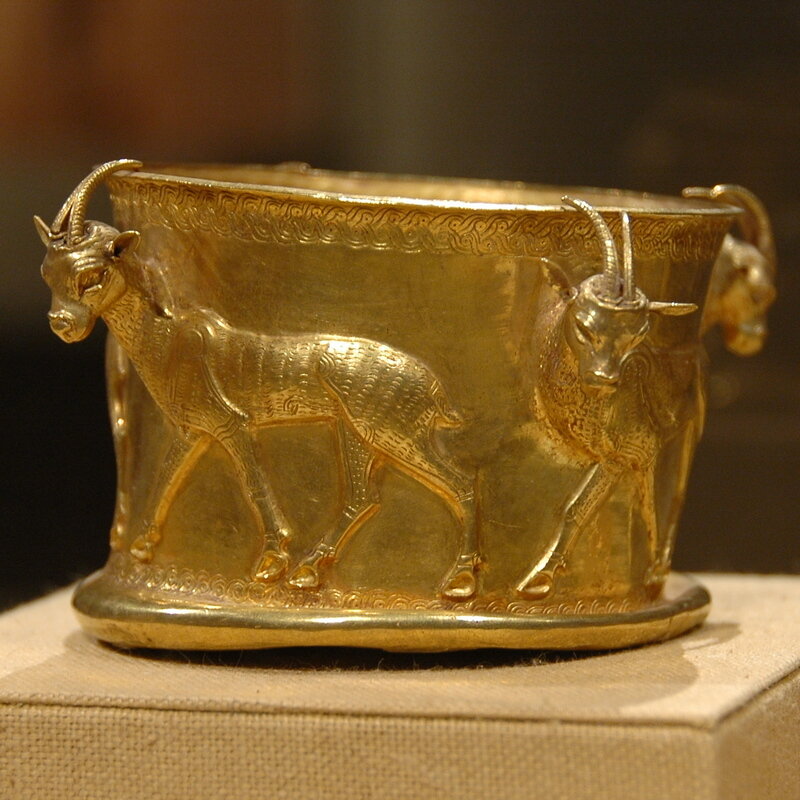Hyrcania, a fertile land with rich, turbulent history

TEHRAN - Hyrcania, Old Persian Varkana, (“Wolf’s Land”), is an ancient region situated in northern Iran, southeast of the Caspian Sea - which was called the Hyrcanian Ocean in antiquity.
Its capital was Zadracarta (Astrabad, modern Gorgan), and it formed part of the Median, Achaemenian, Seleucid, and Parthian empires, either as an independent province or joined with Parthia. In the list of Persian satrapies given by the Greek historian Herodotus, the Paricanians may have been the Hyrcanians.
To the northeast, Hyrcania is open to the Central-Asian steppe, where nomads have been living for centuries; on several occasions, they invaded the country.
According to Britannica, Hyrcania was also the name of a town in Lydia, said by the Greek geographer Strabo to have derived its title from a colony of Hyrcanians settled there by the Persians.
Hyrcania became part of the Achaemenid Empire during the reign of king Cyrus the Great (r.559-530) or Cambyses (r.530-522). The satrap's capital was called Zadracarta and was possibly identical to modern Sari. There is no report about the conquest of Hyrcania, but from the Behistun inscription, we know that it was Persian by 522. The story is as follows:
After the death of Cambyses, the Magian usurper Gaumata, who did not belong to the Achaemenid dynasty, usurped the throne. The adherents of the Persian royal house, however, helped Darius to become a king; he killed the usurper on 29 September 522. Almost immediately, the subjects of the empire revolted. When Darius was suppressing these rebellions and stayed in Babylon, the Median leader Phraortes made his bid for power (December 522). His revolt soon spread to Armenia, Assyria, Parthia, and Hyrcania.
However, the Persian garrison in Parthia still held out. It was commanded by Darius' father Hystaspes. On 8 March 521, the Parthians and their allies, the Hyrcanians, attacked the Persian garrison, but they were defeated. Not much later, Darius was able to relieve his father, according to Livius.org; a website on ancient history written and maintained since 1996 by the Dutch historian Jona Lendering.
This was the first appearance in the history of the Hyrcanians. In the fifth century, the Greek researcher Herodotus of Halicarnassus mentions them several times in his Histories. He has a confused report on irrigation, a note which may be compared to the statement of the second-century historian Polybius of Megalopolis that the Persians had built large irrigation works.
In the confused years after the death of king Artaxerxes I Makrocheir (r.465-424), three of his sons succeeded to the throne: Xerxes II, Sogdianus, and Darius II. The latter was satrap in Hyrcania and may have used troops from Hyrcania and the “upper satrapies”, that is Aria, Parthia, Arachosia, Bactria, and Sogdia.
Hyrcania makes its reappearance in history when the Macedonian king Alexander the Great (r.336-323) invaded Asia.
Hyrcanians are mentioned during the battle of Gaugamela (1 October 331), and in August 329, when the last Persian king, Darius III Codomannus, was dead, many Persian noblemen fled to Hyrcania, where they surrendered to Alexander.
After Alexander's reign, his kingdom fell apart and Hyrcania became part of the new empire of the Seleucid rulers, a Macedonian-Greek dynasty. At the end of the third century BC, northeastern nomads belonging to the tribe of the Parni invaded Parthia and Hyrcania. Although Parthia was forever lost to the Seleucids, Hyrcania was in the last decade of the third century reconquered by king Antiochus III the Great (r.222-187). After a generation, however, Hyrcania was lost again.
To the Parthians - the new name of the Parni - Hyrcania was an important part of the empire, situated between their Parthian territories and their homeland on the steppe. The Parthian kings certainly used a Hyrcanian town as their summer residence. Nonetheless, it was not an uncontested part of their empire; for example, it is known to have revolted in 58 CE.
It is possible - and seems increasingly likely - that during the Sasanian period, a wall was built to defend Hyrcania against the nomads of the Central-Asian steppe. The ruins of the wall north of the river Gorgan are visible today and are called the “Wall of Alexander”, although they are in fact younger.
AFM

Leave a Comment